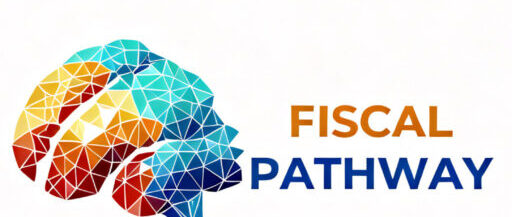Managing a country’s revenue, expenditures, and debt burden through different institutional and governmental policies is known as public finance, and it is an essential component of contemporary economics and politics. By impacting growth, stability, and fair distribution of resources, it is a key player in defining the economic landscape. This article examines the ideas, relevance, and current difficulties of public finance, offering a thorough introduction to the field.
The Fundamentals of Public Finance
The fundamental focus of public finance is on how the government handles its finances. Managing public debt, allocating resources, and collecting taxes are all part of it. Some of the most important parts of public finance are:
1. Government Revenue: This refers to any and all money that the government takes in. Borrowing money, taxes (personal and corporate), and other non-tax sources (fines, fees, and the earnings of state-owned businesses) make up the bulk of the budget. To keep the government running and pay for public goods and services, efficient tax collection is essential.
2. Public Expenditure: When the government pays for its own operations and debts, this is called a public expenditure. Wages, pensions, and subsidies are examples of current expenditures, whereas investments in infrastructure, schools, and hospitals are examples of capital expenditures. Promoting economic development and raising living standards requires the efficient deployment of public monies.
3. Public Debt Management: Governments frequently borrow money in order to cover their spending and income shortfalls. The goal of public debt management is to keep taxes affordable for current and future generations by carefully planning borrowing and repayment schedules. To keep the economy stable and prevent financial crises, good debt management is essential.
The Objectives of Public Finance
In order to promote social welfare and economic stability, public financing accomplishes many essential goals:
1. Economic Stability: Taxes and government expenditure are examples of fiscal measures that public finance uses to help keep the economy stable. By boosting expenditure during recessions and reducing it during booms, governments may stabilize the economy through counter-cyclical policies.
2. Resource Allocation: When it comes to allocating an economy’s resources, public finance is essential. The government can offer public goods that are undersupplied by businesses, affect resource allocation, and fix market failures by allocating funds to different areas.
3. Redistribution of Income: A primary goal of public finance is to lessen income disparity. Redistribution of wealth and assistance for low-income families can be achieved through social welfare programs and progressive taxes.
4. Economic Growth: The government may promote economic growth by making smart investments in areas such as education, infrastructure, and technology. A more productive and competitive economy is the result of public finance policies that encourage investments with a longer time horizon.
The Role of Public Finance in Economic Policy
Both the direction of economic policy and the results of economic activity are profoundly affected by public financing. Important considerations comprise:
1. Fiscal Policy: Government spending and tax policies are part of fiscal policy. Economic activity, inflation, and unemployment may all be managed by governments by altering these levers. Tax increases can be used to cool down an overheated economy, while greater government expenditure can be used to bolster demand during economic downturns.
2. Monetary Policy Interaction: Central banks oversee monetary policy and its effects on public finances. Monetary policy includes managing the money supply and interest rates, in contrast to fiscal policy which addresses governmental expenditure and taxes. To achieve macroeconomic stability, monetary and fiscal policy must be coordinated.
3. Public Investment: The key to sustainable economic growth over the long run is public investment in essential public facilities like roads, schools, and hospitals. Investments like these, made possible by public funding, have the potential to boost productivity, raise living standards, and entice private capital.
Challenges in Public Finance
Despite its significance, public finance encounters certain obstacles that may affect its efficacy:
1. Fiscal Deficits and Debts: High levels of public debt are associated with increased interest rates and less fiscal flexibility, two major dangers posed by budget deficits and debt. A well-planned and executed budget may maintain sufficient public services and investments while keeping deficits under control.
2. Tax Evasion and Avoidance: Tax avoidance and evasion reduce tax income for the government. Strong administrative systems and global collaboration are necessary to overcome the persistent difficulties of implementing efficient tax policy and increasing compliance.
3. Economic Inequality: Achieving a fair allocation of resources is challenging, but public finance seeks to combat income disparity. It is essential to constantly evaluate and improve social programs to make sure they help those in need without becoming them dependent.
4. Globalization and Economic Integration: International commerce, investment flows, and economic integration are all aspects of a globalized economy that public finance policies need to adjust to. Maintaining economic stability requires skillful management of cross-border financial difficulties as well as policy coordination with other governments.
The Future of Public Finance
Future work in public finance must take into account the following trends and challenges:
1. Sustainability: Concerns about climate change and environmental sustainability are on the rise, making public financing an essential tool for supporting environmentally conscious projects and achieving economic sustainability. Renewable energy investment, energy efficiency promotion, and carbon pricing systems are all part of this.
2. Technological Advancement: The emergence of data analytics and digital technologies presents chances to enhance public finance management, thanks to technological advancements. Decisions, tax compliance, and public expenditure may all be improved with better data collecting and analysis.
3. Demographic Changes: Public funds, especially those allocated to healthcare and pensions, will feel the effects of an aging population and other demographic shifts. To tackle these demographic concerns and guarantee long-term sustainability, governments will have to adjust their budgetary policies.
4. Global Economic Uncertainty: Political unrest, trade wars, and economic shocks all pose risks to public budgets across the world. In light of these unknowns, governments should be ready to enact measures that protect economic development and stability.
Conclusion
The allocation of resources, the maintenance of economic stability, and the resolution of income inequality are all impacted by public finance, making it an essential component of economic governance. To promote social equality, maintain fiscal stability, and encourage sustainable growth in today’s complicated economy, governments must master the art of public finance management. Policymakers may do a better job of representing their constituents and making a difference for a more prosperous and equitable society if they take the time to learn about public finance and its opportunities and threats.
FAQs on Public Finance
What is the advantage of finance?
Financial management is advantageous since it helps keep a country’s income, spending, and debt levels under control, all of which are essential for a healthy economy. By easing the way for investments in society-beneficial infrastructure and services, effective public finance encourages resource allocation, helps social welfare by redistributing income, and boosts overall prosperity.
What is a source of finance?
Revenues from personal and corporate taxes, as well as penalties, fees, and profits from state-owned firms, are some of the sources of funding in public finance. Borrowing is another possible source. When it comes to financing government operations and public services, these sources are crucial.
What is a person who does finance?
A financial analyst, public finance manager, or budget officer is someone who works in the field of finance, especially in the public sector. Experts in this field examine monetary data, oversee budgets, and guarantee the effective distribution of funds to meet public policy goals.




